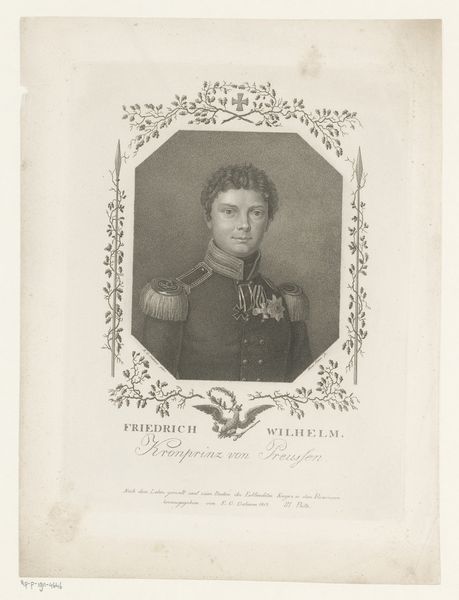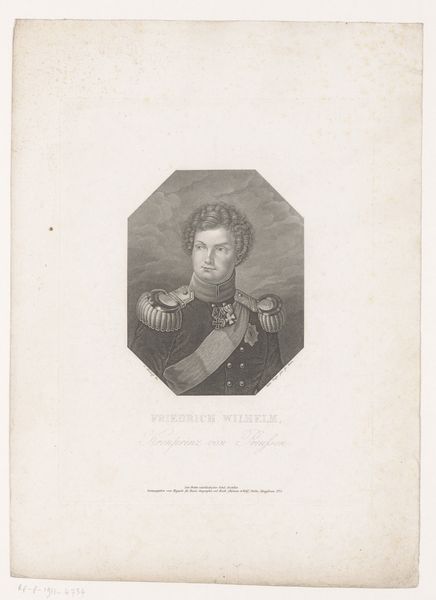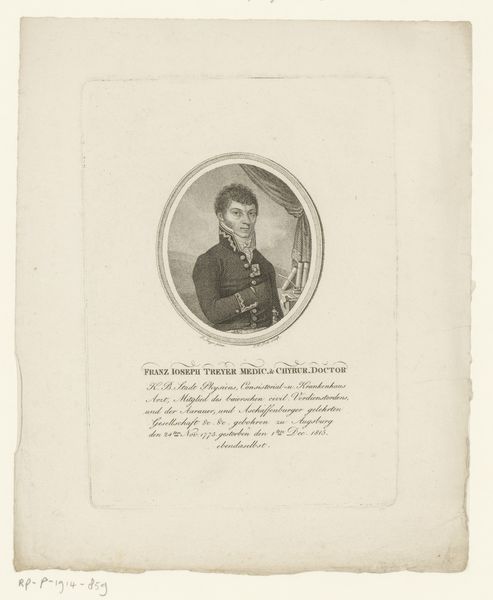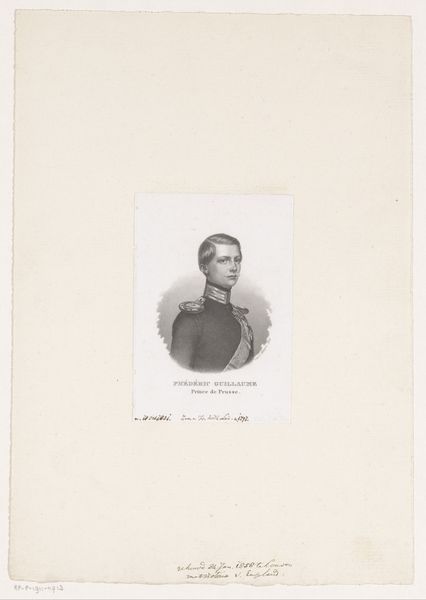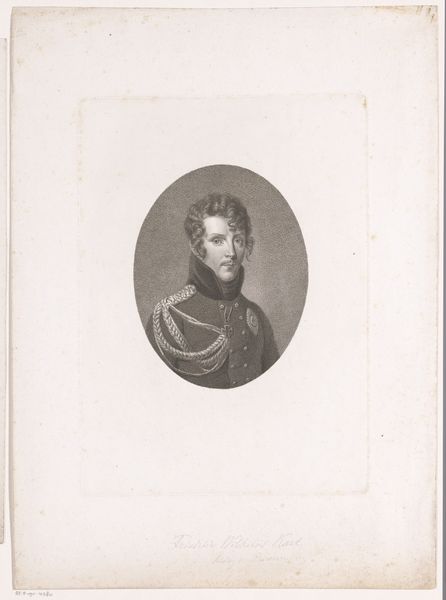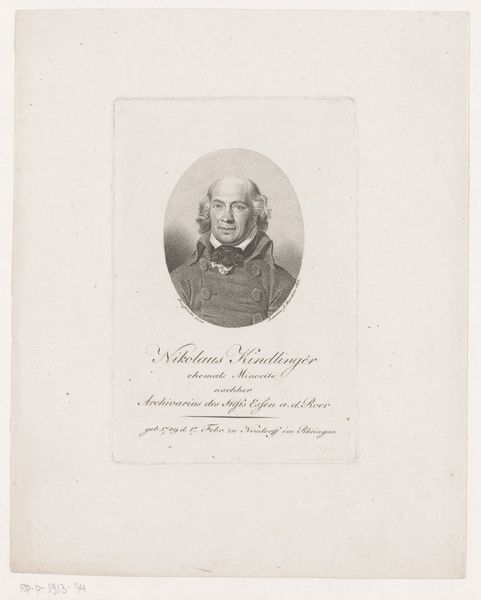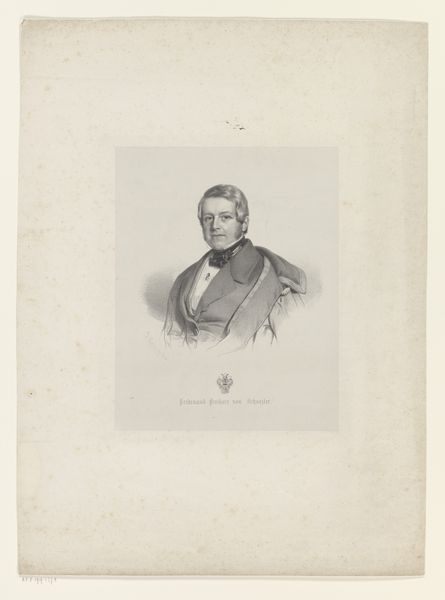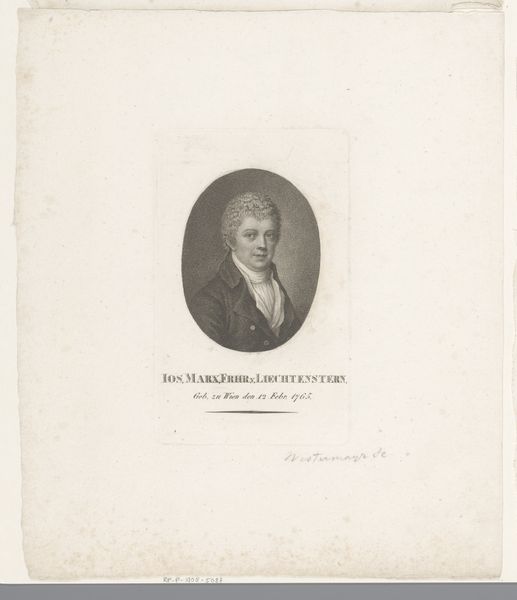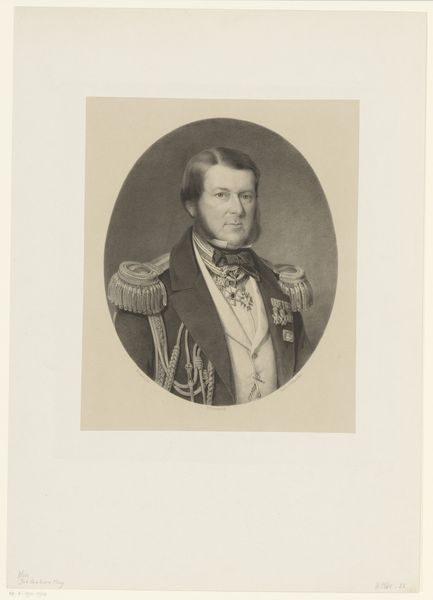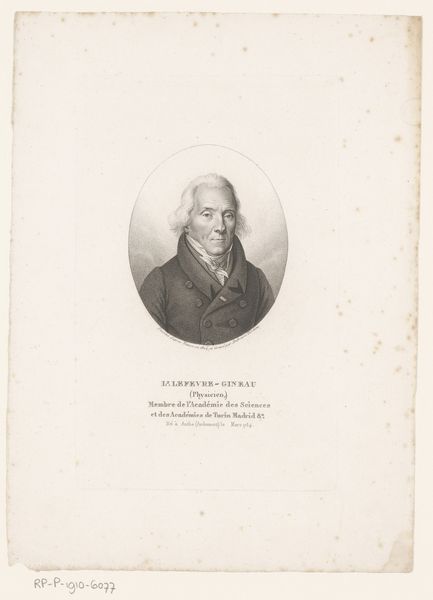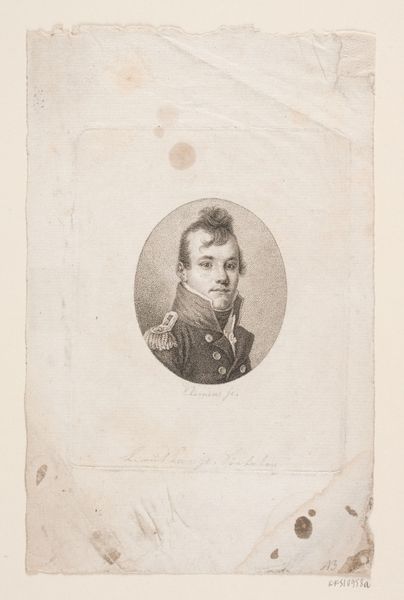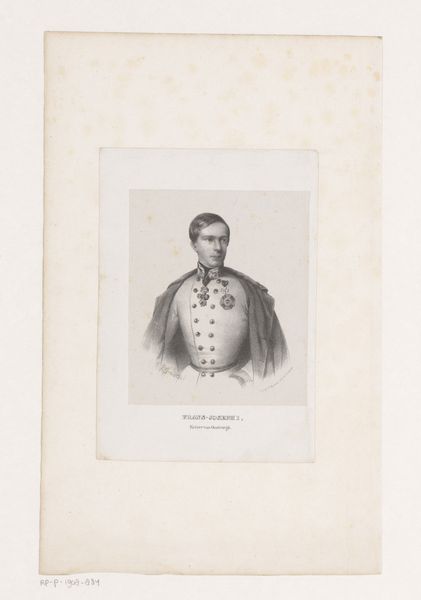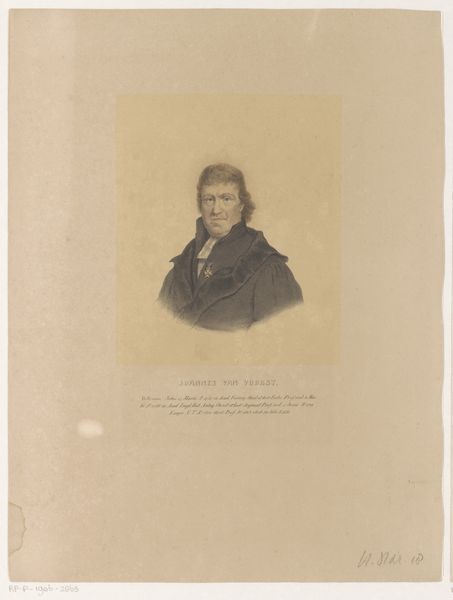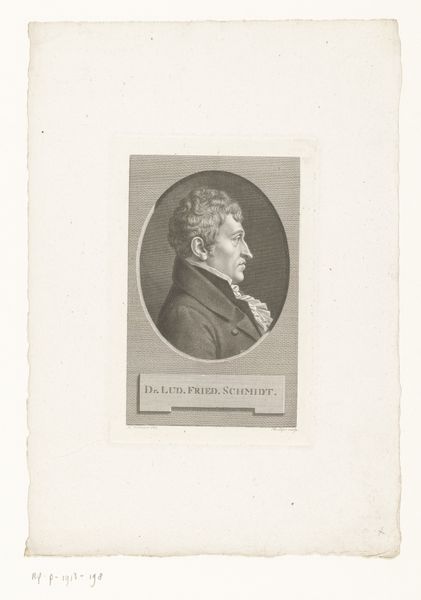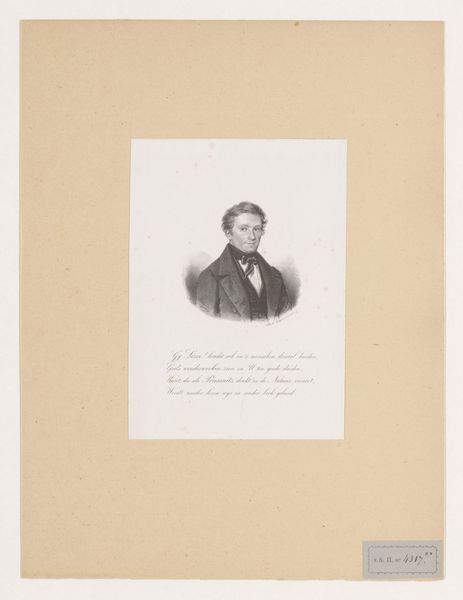
pencil, engraving
#
portrait
#
pencil drawn
#
pencil sketch
#
pencil drawing
#
romanticism
#
pencil
#
pencil work
#
engraving
Dimensions: height 104 mm, width 70 mm
Copyright: Rijks Museum: Open Domain
Curator: Let’s talk about this understated yet powerful portrait of Willem I, King of Württemberg, created by Johann Friedrich Bolt. The engraving was made sometime between 1816 and 1836 and resides here at the Rijksmuseum. Editor: The precision is striking; it's a starkly formal portrait, almost severe in its presentation. The monochromatic palette emphasizes line and form, really demanding that we look at the texture, especially of that elaborate shoulder detail. Curator: Absolutely. The texture points to the significance of craft in portraying power. The engraving process, with its laborious etching, mirrored the meticulous construction of royal image and authority in this era. How the elite wanted to project themsleves. Editor: And that construction has social and economic ramifications. The artist, Bolt, employs engraving – a process accessible to a growing middle class through printmaking and commercial publishing. Curator: True, it was crucial for disseminating images of power, constructing collective identities. Willem I, post-Napoleonic upheaval, uses this portrait to communicate legitimacy amid complex shifts in power. What we might understand of leadership in such times. Editor: The act of commissioning such a work speaks volumes about class structures and consumerism. These works allowed wider audiences to engage, even consume images of those in authority, therefore also dictating what and who had value. Curator: It opens up conversations about class and accessibility in an era where visibility, often dictated by one's position, could either create a space for connection or perpetuate distance. Considering the legacy, this makes you ponder how carefully constructed symbols, such as Willem's regal bearing, function when seen across many years. Editor: It prompts considerations about value beyond pure aesthetics, then. I'm taking with me a renewed respect for the materiality of power, here manifested in ink and paper.
Comments
No comments
Be the first to comment and join the conversation on the ultimate creative platform.
